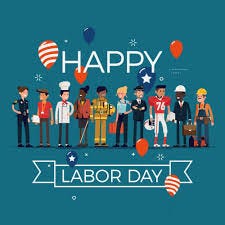Labor Day was established to celebrate the contributions labor unions and workers have made to this country. The holiday grew out of worker protests in the late 1800s challenging horrific conditions, 70-plus hour work weeks, and abusive child labor forced upon them by the relatively wealthy capitalists who owned the manufacturing factories and mills.
Today, it’s an odd holiday with few rituals beyond barbecues and shopping. The weekend also marks the unofficial end of summer, eve of the start of the school year, and rounding the corner into the home stretch of the election season. In fact, many politicians attend Labor Day picnics and barbecues as a show of support for labor unions. I did so myself when I was running for state office back in what now feels like a different lifetime.
As the current presidential campaign heats up we’re hearing a lot from the candidates, pundits, and corporate media about the needs and opinions of the “middle class” and the “working class”. Those labels, and politicians promising to benefit those they describe, are part of our political norm and narrative. I detest it.
The United States puts itself forward as the land of opportunity, a place where anybody can get ahead if they work hard enough, but in many ways that’s a myth. A person born into wealth will likely inherit wealth and our system is structured so that money itself generates more money. A person born into poverty faces incredible challenges and daunting odds against success rising into higher economic classes.
Research into the terms “working class” and “middle class” turned up interesting results. First, the terms were coined by sociologists. Economists and political pollsters often define “working class” as those people lacking a college degree but the term is also used to describe workers in blue collar or service jobs.
There seems to be even greater variation in the definition of “middle class”. Brookings Institution published their definition of the “middle class” as the middle 60 percent of households on the income distribution. This captures the 30 percent of households above and below median income, with incomes ranging from $37,000 all the way to $147,000 for a three-person household. The Social Security Administration notes, “Although there is no official government definition of the middle class, the three middle quintiles of the income distribution ($28,000 to $109,00 for married couples and $11,000 to $41,000 for single persons) are a commonly used definition.”
Are you kidding me? $11,000 per year places someone in the middle economic class? Obviously, the actual lived level of poverty in this country is far, far higher than official estimates.
The truth is we live in a corporatocracy and are ruled by a form of capitalism that has led to unprecedented and truly stunning levels of income and wealth inequality. The U.S. has the highest level of income inequality of all developed countries. Our economic inequality is closer to that seen in Latin America than in Europe.
Keep reading with a 7-day free trial
Subscribe to TRANSCEND with Cylvia Hayes to keep reading this post and get 7 days of free access to the full post archives.




